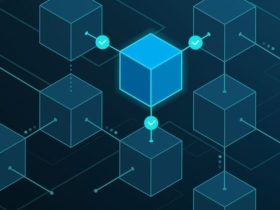Discover today’s in-depth analysis of cybersecurity trends on April 15, 2025. Learn about AI-era innovations, Palo Alto Networks’ latest funding update, Taiwan’s new cybersecurity center to counter quantum and AI threats, CyberArk’s urgent warning on AI risks, and Alchemi Data Management’s exhibit at the North Carolina Cybersecurity Symposium. Get key insights and expert commentary on partnerships, funding, and emerging threats in the cybersecurity landscape.
Introduction: Navigating the Shifting Landscape of Cybersecurity
In today’s digital age, where advanced technologies transform every facet of business and society, cybersecurity remains a paramount concern. As we welcome April 15, 2025, this edition of Cybersecurity Roundup: Partnerships, Funding, and Emerging Threats brings you a deep dive into the latest developments in the industry. The battlefield has expanded far beyond traditional data breaches and malware; emerging challenges like AI-powered attacks, quantum computing vulnerabilities, and unprecedented funding dynamics are reshaping cybersecurity.
Recent news highlights underscore the increasing role that strategic partnerships, robust funding, and innovative defenses play in safeguarding digital infrastructures. Industry leaders are taking bold steps—from adopting rapid evolution in threat detection methods to expanding capabilities in response to the dual challenges of artificial intelligence and quantum computing. Amid these transformative times, companies and governments alike are reevaluating their cybersecurity postures.
Our briefing today examines five critical news stories:
-
Evolving Cybersecurity in the AI Era: A recent analysis from The Hacker News explains how the sector must adapt faster than ever before.
-
Palo Alto Networks on Funding and Growth: Insights from a Yahoo Finance report detail significant developments in funding strategies for cybersecurity innovations.
-
Taiwan’s New Cybersecurity Center: As reported by The Quantum Insider, Taiwan is planning a dedicated center to counter both quantum and AI threats.
-
CyberArk’s Stark Warning: Forbes brings our attention to the growing risks to AI agents and large language models, urging industry-wide caution.
-
Alchemi Data Management at the Cybersecurity Symposium: A PR Newswire release highlights how this company is showcasing its groundbreaking solutions at the North Carolina Cybersecurity Symposium.
Throughout this article, we offer a detailed commentary on these developments, analyzing their broader implications and providing an opinion-driven perspective on how they shape today’s cybersecurity environment. With emerging threats accelerating in tandem with technological innovations, our collective understanding of risk and resilience must evolve accordingly.
Cybersecurity is no longer just about erecting digital barricades; it involves continuous innovation, strategic funding, and forward-thinking partnerships. In the following sections, we’ll unpack each story, discuss the technologies and threats at play, and reflect on the strategic considerations that every stakeholder in this space must now contend with.
I. Cybersecurity in the AI Era: Evolve Faster
Source: The Hacker News
The pace of change in digital technology has never been this rapid. As organizations worldwide incorporate artificial intelligence (AI) into daily operations, cybercriminals are adopting similarly sophisticated tactics. The Hacker News recently published an in-depth piece on how cybersecurity must evolve faster to keep pace with the emerging AI era.
A New Era of Cyber Threats
AI is transforming the threat landscape in more ways than one. On the one hand, AI-driven attacks are becoming increasingly common. Malicious actors are leveraging machine learning algorithms to automate phishing attacks, bypass traditional security measures, and execute sophisticated intrusion attempts. These next-generation cyber threats can adapt in real time, learn from failed exploits, and even target vulnerabilities that were previously thought to be secure.
In parallel, defenders are harnessing AI to bolster their security operations. Advanced threat detection systems powered by machine learning now sift through enormous volumes of data to pinpoint anomalies. These tools improve response times and enable proactive measures against potential breaches.
The Dual-Edged Sword of AI Integration
The crux of the challenge lies in balancing the benefits of AI-driven innovation with its inherent risks. As organizations integrate AI into their operational frameworks, the very technologies designed to protect sensitive data can become pathways for exploitation if not rigorously managed. The Hacker News article emphasizes that cybersecurity strategies must be reimagined to account for these dual-edged capabilities.
Key takeaways include:
-
Rapid Adaptation: Cybersecurity frameworks must be agile enough to incorporate continuous updates, learning, and adaptation. Static defenses are no longer sufficient in the face of AI’s dynamic capabilities.
-
Enhanced Monitoring: Implementing AI-powered monitoring solutions is critical. These systems analyze behavioral patterns across networks, rapidly flagging potential intrusions before they escalate.
-
Interdisciplinary Collaboration: The modern cybersecurity armory must include data scientists, threat analysts, and ethical hackers working in tandem. Such diverse expertise is crucial in anticipating the methods employed by attackers.
-
Resilient Infrastructure: Building resilient systems that can absorb and recover from breaches is imperative. Companies must invest in redundant systems, backup protocols, and real-time incident response teams.
Evolving Best Practices
The evolving landscape calls for a paradigm shift in cybersecurity best practices. Traditional, signature-based approaches are quickly becoming obsolete. Instead, organizations must adopt behavior-based detection models that leverage real-time data and historical trends.
The article further explores how cybersecurity teams are refining their strategies by integrating insights from AI research into security operations centers (SOCs). This merger of disciplines leads to a more holistic view of risk—a critical development in an era marked by rapid technological innovation and equally rapid cyber-attacks.
Commentary:
The central lesson from this piece is clear: as AI continues to reshape operational and threat paradigms, cybersecurity defenses must evolve at an unprecedented pace. Organizations unwilling to adapt risk leaving themselves vulnerable to new, unpredictable attack vectors. While AI tools offer tremendous defensive power, they also create additional points of vulnerability if not carefully managed.
This evolution challenges both technical experts and leadership to rethink resource allocation, update operational strategies, and foster a culture of continuous innovation within security teams. The message to the industry is emphatic: adapt faster or risk obsolescence in a rapidly changing digital battlefield.
II. Palo Alto Networks: Driving Growth Through Strategic Funding
Source: Yahoo Finance
As cybersecurity challenges grow in complexity, so does the need for robust funding and smart investments. According to a recent Yahoo Finance report, Palo Alto Networks is at the forefront of leveraging strategic funding to fuel its growth and innovation. The company—widely recognized for its advanced firewall technology and integrated security platform—continues to expand its capabilities in a market hungry for comprehensive cybersecurity solutions.
Fueling Innovation Through Capital Injection
The Yahoo Finance report highlights that Palo Alto Networks has secured significant capital intended for advancing research and development, expanding its cloud security offerings, and fortifying its global presence. This influx of funding is not merely about scaling operations—it’s a signal that the cybersecurity market is evolving into a high-stakes, high-investment industry where cutting-edge innovation is essential to outpacing emerging threats.
Key points include:
-
Investment in R&D: Palo Alto Networks is channeling increased funds toward the development of next-generation security products. These include enhanced threat detection systems, AI-powered analytics, and more resilient network security solutions.
-
Global Expansion: The company is also leveraging capital to expand its international footprint. With cyber threats on the rise worldwide, having a global presence ensures rapid response and localized support in case of emerging regional threats.
-
Strategic Partnerships: Alongside funding, Palo Alto Networks is fostering strategic alliances with other technology leaders, government agencies, and research institutions. These partnerships are designed to integrate diverse expertise, promote cross-sector collaboration, and enhance overall cybersecurity readiness.
-
Innovation in Cloud Security: As businesses increasingly migrate to cloud environments, securing these infrastructures becomes paramount. Palo Alto Networks is investing heavily in cloud-native security tools designed to protect sensitive data stored and processed in remote environments.
Broader Implications for the Industry
The funding and strategic moves by Palo Alto Networks have wider implications for the entire cybersecurity landscape. They signal investor confidence in the sector, suggesting that as companies face more complex cyber threats, the market will continue to reward bold, forward-thinking investments.
Commentary:
The expansion of Palo Alto Networks is a vivid illustration of how strategic funding can act as a catalyst for growth and innovation. In an environment where cyber threats are growing more sophisticated by the day, robust financial backing is essential for developing the next generation of security technologies. Stakeholders across the board—from corporate leaders to small startups—should view such investments as a benchmark for the industry’s evolving priorities.
Moreover, the infusion of capital not only accelerates technological advancements but also fosters a collaborative ecosystem where companies can share threat intelligence and best practices. In a field where every second counts, the ability to quickly innovate and deploy solutions can be the difference between a contained incident and a full-blown security breach.
As we witness the evolving dynamics of the cybersecurity funding landscape, Palo Alto Networks serves as a case study in how industry leaders can leverage market confidence and investment to build more resilient, adaptive security infrastructures for the future.
III. Taiwan’s Cybersecurity Center: Countering Quantum and AI Threats
Source: The Quantum Insider
In an ambitious bid to safeguard its digital future, Taiwan has announced plans to establish a state-of-the-art cybersecurity center designed to counter the dual threats posed by quantum computing and artificial intelligence. As detailed in a recent report by The Quantum Insider, this initiative represents one of the most strategic moves in the global cybersecurity arena today.
Quantum and AI: Emerging Challenges to Conventional Security
The potential of quantum computing to break conventional encryption methods is both a technological marvel and a profound security concern. Similarly, the rapid evolution of AI is enabling highly adaptive and sophisticated cyber-attacks. Taiwan’s new center aims to bridge the gap between present cybersecurity capabilities and the emerging challenges of tomorrow.
Key aspects of the new cybersecurity center include:
-
Advanced Research and Development: The center will serve as a hub for R&D, bringing together experts in quantum computing, AI, cryptography, and data analytics. The goal is to develop innovative defense mechanisms that can withstand the computational power of quantum machines.
-
Collaboration Across Sectors: Reflecting a holistic approach, the center will collaborate with universities, private enterprises, and international partners. This collaborative model is intended to ensure that innovative solutions are rapidly translated into practical, deployable technologies.
-
Strategic National Investment: Recognizing that the threats posed by quantum and AI technologies transcend national borders, Taiwan’s initiative is backed by significant government investment. This commitment underlines the strategic importance of cybersecurity in maintaining national security and economic resilience.
-
Proactive Defense Strategies: Beyond traditional reactive security measures, the center aims to develop proactive defense strategies. This involves simulating quantum attacks, stress-testing existing cryptography, and developing post-quantum encryption methods that are resistant to future threats.
Implications for Global Cybersecurity
The establishment of Taiwan’s cybersecurity center is set to have a profound impact on global cybersecurity. By addressing the vulnerabilities associated with quantum computing and AI-enabled threats, this initiative may well serve as a model for other nations facing similar challenges. The focus on proactive, research-based strategies could accelerate the development of next-generation cybersecurity defenses worldwide.
Commentary:
Taiwan’s forward-thinking investment in cybersecurity infrastructure is an important signal to the international community. As cyber threats increasingly incorporate advanced technologies, the traditional methods of defense no longer suffice. Taiwan’s initiative to establish a dedicated center underscores the urgency for nations to rethink and modernize their cybersecurity strategies in light of these emerging challenges.
Furthermore, the center’s collaborative approach—uniting academic research, private sector innovation, and government oversight—sets a new standard for comprehensive cyber defense. In a future where quantum computing and AI will redefine the boundaries of what is technologically possible, early investments in research and proactive defense are not just prudent; they are essential for national security and economic stability.
IV. CyberArk Warns of Cybersecurity Threats to AI Agents and Large Language Models
Source: Forbes (Gil Press)
In a sobering analysis published by Forbes, cybersecurity firm CyberArk has issued stark warnings about the vulnerability of AI agents and large language models (LLMs) to sophisticated cyber-attacks. As AI systems become more integral to everyday business operations and decision-making, the risks associated with their potential exploitation grow exponentially.
New Frontiers of Cyber Threats
CyberArk’s report sheds light on a growing concern: as AI systems become more capable and widely integrated, they also become increasingly attractive targets for cybercriminals. These threats include:
-
Manipulation of AI Behaviors: Cyber adversaries could alter the decision-making processes of AI agents, effectively turning these systems against the organizations that rely on them.
-
Data Poisoning: The integrity of training data for large language models can be compromised, leading to erroneous outputs and potentially catastrophic decisions based on those models.
-
Exploitation of Vulnerabilities: Like any complex software, AI systems are prone to security vulnerabilities. CyberArk underscores that as these systems grow more sophisticated, so too do the techniques designed to breach them.
Industry-Wide Implications
CyberArk’s cautionary message carries weight for the entire industry. With AI at the heart of many operational and strategic processes, ensuring the security and integrity of these systems is critical. The report calls on developers, users, and regulators to:
-
Adopt Robust Security Measures: This involves integrating security protocols at every stage of AI development—from data collection and model training to deployment and ongoing monitoring.
-
Implement Continuous Testing and Validation: Regular audits and testing of AI systems can help identify vulnerabilities before they are exploited. CyberArk stresses the importance of simulating attacks in controlled environments.
-
Promote Cross-Sector Collaboration: The threat landscape described is not confined to any one sector. Collaboration between different industries can lead to the development of better, more resilient security frameworks that protect AI assets on a broader scale.
A Wake-Up Call for the AI Ecosystem
The Forbes article underscores a critical point: as the race for AI dominance continues, security cannot be an afterthought. CyberArk’s warnings are a wake-up call for organizations to re-evaluate their AI security protocols and invest in measures that protect not only data but also the decision-making machinery that drives modern business.
Commentary:
CyberArk’s insights are a clarion call for all who rely on AI. As our reliance on advanced algorithms grows, so does the necessity for rigorous, holistic security practices. The message is clear: innovation in AI must be matched by equal innovation in its defense. Stakeholders must work together to bridge the gap between capability and security, ensuring that the very tools designed to propel industries into the future do not become unwitting conduits for cyber exploitation.
In an era where the potential consequences of compromised AI systems range from minor disruptions to major systemic failures, the lessons from CyberArk’s report are not merely advisory—they are essential. The future of AI depends on our ability to secure it against threats that are evolving as quickly as the technology itself.
V. Alchemi Data Management at North Carolina Cybersecurity Symposium
Source: PR Newswire
Amid a bustling calendar of cybersecurity events, Alchemi Data Management is set to exhibit its cutting-edge technologies at the upcoming North Carolina Cybersecurity Symposium. A PR Newswire release details how the company is positioning itself at the forefront of data management innovations and threat detection solutions in an increasingly volatile digital environment.
Showcasing Innovation and Partnership
At the symposium, Alchemi Data Management will highlight its latest innovations designed to improve data security and provide enhanced protection against cyber threats. Key areas of focus include:
-
Advanced Data Encryption: Utilizing state-of-the-art techniques, Alchemi’s solutions are engineered to secure sensitive data against unauthorized access, even in the face of sophisticated cyber-attacks.
-
Real-Time Threat Monitoring: The company’s platform features real-time analytics and threat detection modules, which can instantly flag anomalies and potential breaches.
-
Collaborative Security Frameworks: Recognizing that cybersecurity is a shared challenge, Alchemi is fostering partnerships with other technology leaders and academic institutions to develop robust, cross-functional security protocols.
-
User-Friendly Management Tools: With an emphasis on usability, the platform is designed to be accessible for security teams of all sizes, ensuring that even smaller enterprises can leverage enterprise-grade security solutions.
The Broader Implications
Alchemi Data Management’s participation in the symposium is a testament to the growing importance of events that foster knowledge exchange and collaboration in the cybersecurity community. As new threats emerge and technology evolves, these gatherings are essential for sharing best practices and forging partnerships that can deliver comprehensive solutions.
Commentary:
The decision by Alchemi Data Management to showcase its innovations at the North Carolina Cybersecurity Symposium illustrates the critical role of industry events in shaping cybersecurity trends. By coming together to discuss strategies, share experiences, and explore new technologies, stakeholders can collectively raise the bar for security standards across the board. For many companies, these events offer not only exposure to emerging technologies but also valuable opportunities to establish strategic alliances that can drive future innovation and resilience.
VI. In-Depth Analysis: Strategic Considerations for the Cybersecurity Industry
Taken together, these five stories illustrate an industry in the midst of profound transformation. Several strategic themes emerge:
1. The Convergence of AI and Cybersecurity
Artificial intelligence, while offering vast potential for improved defense mechanisms, also introduces new vulnerabilities. The dual narrative of The Hacker News and CyberArk’s reports brings this paradox into sharp focus. Organizations must invest in technology that both harnesses the power of AI for defense and mitigates its risks by securing AI agents and training processes.
2. Investment as a Catalyst for Innovation
The significant funding news highlighted by Palo Alto Networks demonstrates that robust financial support is not merely an enabler—it is an imperative for survival. In an era where cyber threats are increasingly sophisticated, continuous capital injection fuels research, development, and expansion. This funding underpins rapid technological progress and positions companies to stay ahead of evolving threats.
3. National and International Collaborations
Taiwan’s initiative to establish a cybersecurity center exemplifies how government-backed collaborations can set a strong foundation for future security frameworks. By uniting research institutions, private enterprises, and government agencies, such centers can lead to breakthroughs that have global implications. The collaborative ethos is also evident in the cybersecurity symposium, where shared expertise is a cornerstone of progress.
4. Proactive Versus Reactive Security Postures
A recurring theme throughout these developments is the need to shift from a reactive to a proactive security posture. The emphasis is on anticipating threats—from AI-driven attacks to vulnerabilities posed by quantum computing—and implementing preemptive measures. This proactive approach is critical if organizations and nations are to secure their digital assets against threats that evolve at an exponential rate.
5. The Human Factor and Ethical Considerations
Finally, the broader cybersecurity narrative must incorporate the human element. Whether it’s the teams behind innovative security solutions or the ethical imperatives of ensuring equitable data protection, human expertise remains at the heart of effective cybersecurity. Investing in talent, fostering interdisciplinary collaboration, and adopting ethical approaches to data management are essential components of a resilient cybersecurity ecosystem.
Commentary:
As the pace of technological innovation accelerates, so too must our strategies for cybersecurity evolve. The multifaceted nature of modern threats demands that organizations adopt integrated, forward-thinking approaches that combine the latest technologies, robust funding mechanisms, and a commitment to ethical practices. The insights provided by these news stories serve as a powerful call to action—for industry leaders, policymakers, and cybersecurity professionals alike—to work together in crafting a safer digital future.
VII. Conclusion: Reflecting on Today’s Cybersecurity Landscape and Looking Ahead
April 15, 2025, marks a pivotal moment in the ongoing evolution of cybersecurity. Today’s stories serve as a microcosm of a rapidly shifting landscape where emerging threats and technological innovations are challenging conventional boundaries.
From the urgent need to evolve cybersecurity measures in the age of AI to significant capital investments driving innovative defenses, the industry is in the midst of a profound transformation. Taiwan’s proactive establishment of a cybersecurity center to counter quantum and AI threats represents a strategic investment in future-proofing national security, while CyberArk’s stark warnings about the vulnerabilities of AI agents remind us of the high stakes involved.
At the same time, events like the North Carolina Cybersecurity Symposium provide crucial platforms for collaboration and knowledge-sharing. Exhibitions by companies such as Alchemi Data Management highlight that the path to robust cybersecurity lies not just in technology, but in forging strong partnerships, investing in research, and building resilient infrastructures.
Key Takeaways
-
Adapt and Evolve: The rapid rise of AI-powered cyber-attacks demands that security strategies evolve swiftly. Organizations must remain agile, leveraging advanced monitoring systems and proactive defense measures.
-
Invest in Innovation: Strategic funding, as evidenced by Palo Alto Networks, is critical to developing next-generation security solutions. Robust investment ensures that the industry can keep pace with the increasingly complex threat landscape.
-
Collaborative Defense: National initiatives and international partnerships, such as Taiwan’s cybersecurity center and industry symposiums, underscore that a unified approach is essential. Sharing expertise and resources is key to countering global cyber threats.
-
Future-Proofing Security: As emerging technologies, including quantum computing and AI, reshape the threat paradigm, organizations must not only defend against current risks but also anticipate future vulnerabilities. This calls for continual research, testing, and adaptation.
-
The Human Element: Technology alone cannot secure our digital future. The expertise, ethics, and resilience of the workforce behind cybersecurity remain indispensable. Investing in talent and fostering a culture of continuous improvement will help ensure long-term success.
Final Reflections
The cybersecurity industry stands at a crossroads. With each breakthrough comes new challenges, and with every sophisticated threat, the imperative for coordinated, innovative defense becomes more urgent. Today’s briefing has illuminated the ways in which strategic funding, international collaboration, and cutting-edge technology are converging to build a more secure digital landscape.
Looking forward, the integration of AI in both offensive and defensive roles will continue to redefine cybersecurity. Leaders who understand the delicate balance between innovation and vulnerability will be best positioned to safeguard critical infrastructures and protect organizations against ever-evolving threats.
In a world where digital assets are among the most valuable commodities, ensuring their security is a task that requires collective effort, continuous learning, and an unwavering commitment to ethical practices. As we reflect on today’s developments and consider the road ahead, one thing is clear: the future of cybersecurity depends on how effectively we can anticipate and neutralize the challenges of tomorrow.
Thank you for joining us on this deep dive into the latest trends, funding initiatives, partnerships, and emerging threats defining the cybersecurity landscape. Stay informed, stay secure, and remain vigilant as we collectively shape the future of digital defense.















Got a Questions?
Find us on Socials or Contact us and we’ll get back to you as soon as possible.